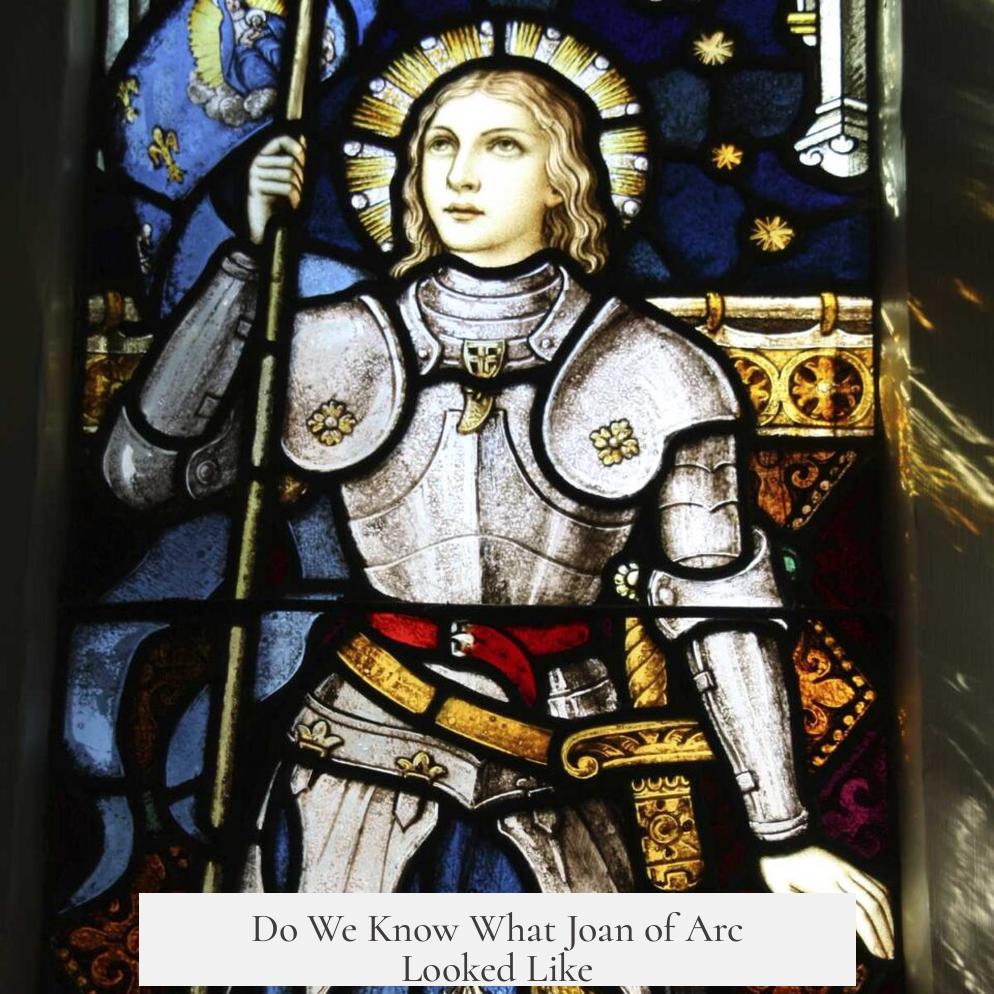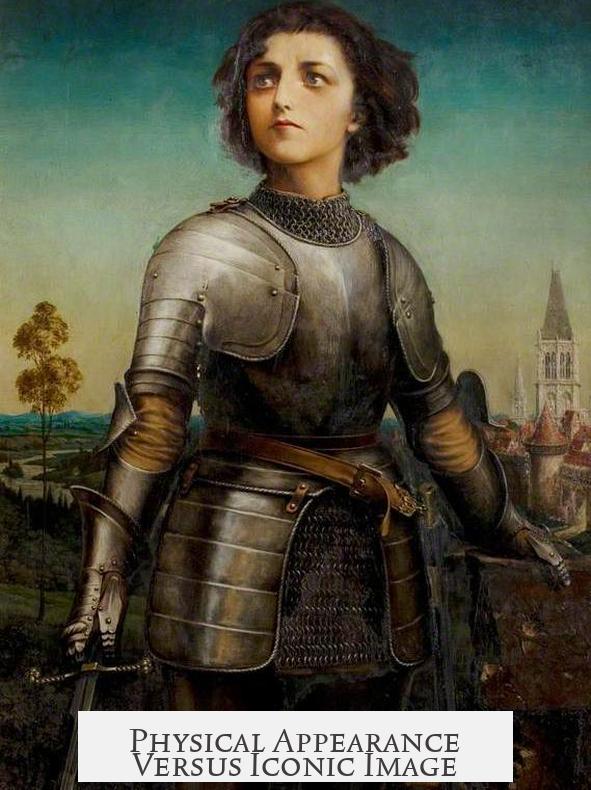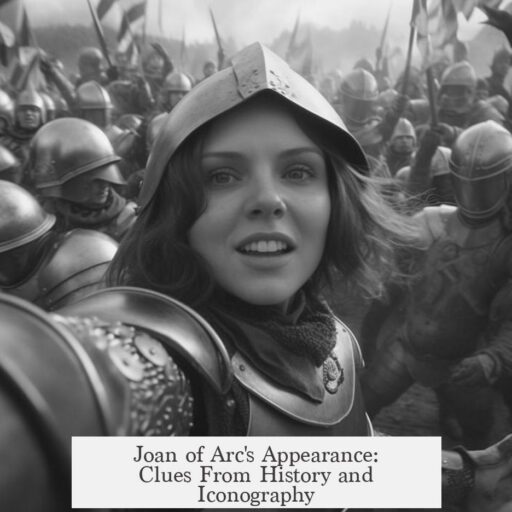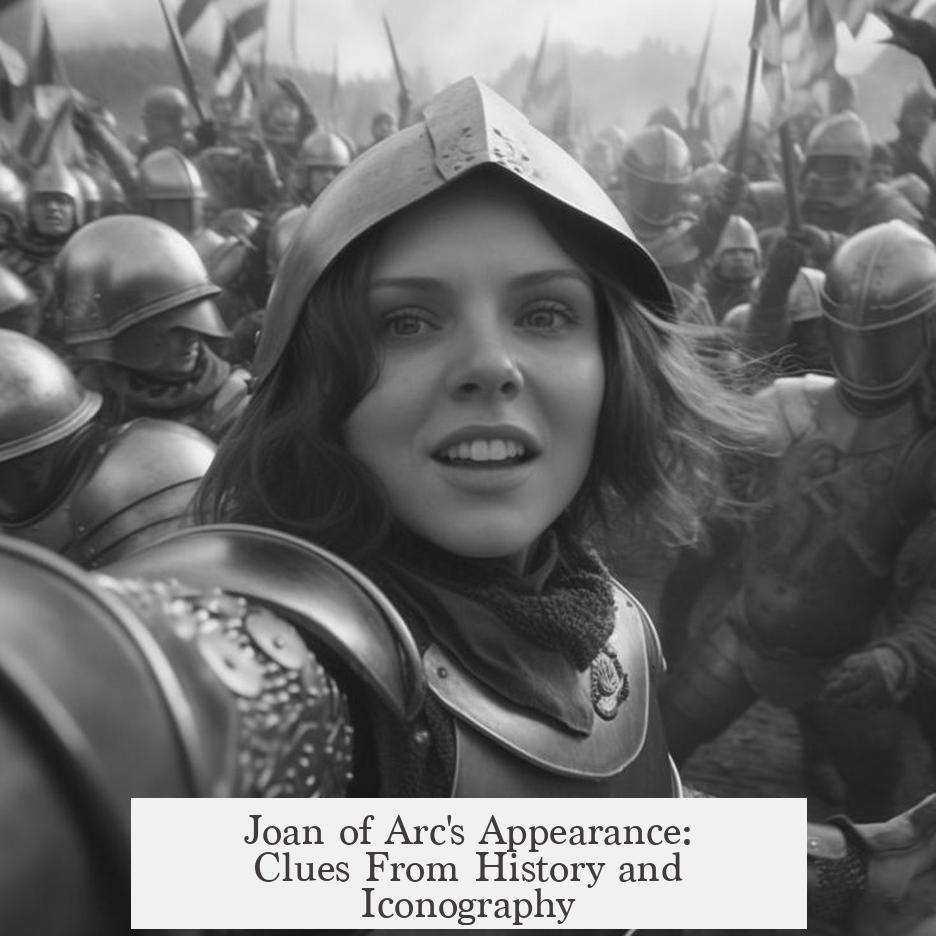Joan of Arc’s physical appearance is understood only in broad terms. She stood about 5 feet 2 inches tall with dark hair cut short in a male style. Contemporary accounts describe her as reasonably attractive, not conventionally beautiful, with some noting a short neck and a red birthmark beneath one ear. More notable than her physical features was her consistent choice to wear male clothing and hairstyle, which was central to her mission and had major implications for her trial and death.
Few detailed descriptions of Joan’s appearance survive from her time. Perceval de Boulainvilliers, a contemporary, wrote that she had “satisfying grace” and a “virile bearing.” He also remarked on her voice’s “womanly charm” and her cheerful expression despite tears. Two men who traveled with Joan noted her physical attractiveness, mentioning specifically the pleasing size and shape of her breasts. A less common report from Eugelide, Princess of Hungary, suggested Joan had a short neck and a red birthmark below one ear, but this detail remains unverified.
Joan’s height—about 5’2″ (157 cm)—was typical for women at the time. Her dark hair was notably cut short, “in a circle above her ears,” resembling a man’s hairstyle more than a woman’s. This style helped conceal her gender visually, especially on the battlefield.
Joan’s choice to wear male clothing was unusual and significant. Although one surviving contemporary drawing shows her as a girl with long hair and a dress, this image reflects the era’s assumptions rather than fact. She always wore male military attire even off the battlefield. This choice shocked many contemporaries and was used against her in her religious trial. Cross-dressing was forbidden by scripture and considered a punishable offense. Joan’s refusal to abandon male clothing was a key factor leading to her execution.
The reasons behind Joan’s cross-dressing combine practical and spiritual concerns. Practically, wearing male clothes helped shield her virginity and deter sexual assault in the violent, all-male military environment. The theology of the era emphasized that a pure virgin (*pucelle*) held a unique spiritual status, required to fulfill her divine mission. The famous church father St. Jerome suggested that a woman who serves Christ above all else “shall cease to be called a woman and shall be a man,” providing some religious context for Joan’s actions.
Some historians consider that Joan’s cross-dressing might reflect deeper aspects of her identity, including possible reflections on sexuality, but there is no conclusive evidence. Joan herself stated that dressing in male clothing was “pleasing to God” and essential to her mission. She mentioned a “sign” from God validating her choice, though the nature of this sign remains unclear.
Joan’s male attire placed her outside the norms expected of female religious figures. Her identity as a *pucelle*—virgin and spiritually pure—was critical for gaining military command and royal support from Charles VII. Yet, she never fully disguised her gender; her male dress did not fool her followers into thinking she was a man. Instead, it challenged the gender roles and male dominance of her era.
| Aspect | Details |
|---|---|
| Height | About 5 feet 2 inches (157 cm) |
| Hair | Dark, cut short above the ears in male style |
| General Appearance | Reasonably attractive, with a virile bearing and cheerful expression |
| Distinctive Features | Reported short neck and red birthmark beneath one ear (unconfirmed) |
| Clothing | Wore male military clothing consistently, both on and off battlefield |
| Religious/Practical Significance | Cross-dressing linked to spiritual mission and protection of virginity |
- Joan’s appearance is documented only in broad terms.
- Her short hair and male clothing were central to her identity and mission.
- Contemporary descriptions emphasize a mixture of grace and strength rather than conventional beauty.
- Her cross-dressing had practical, theological, and legal consequences.
- The exact details, like the reported birthmark, lack firm verification.
Do We Know What Joan of Arc Looked Like?

Short answer: Yes, but only in broad strokes—Joan of Arc stood about 5 feet 2 inches tall, had dark cropped hair, was reasonably good-looking, and wore men’s clothing as a deliberate choice. Now, let’s unravel the fascinating details behind this iconic figure’s appearance and why what she wore mattered far more than just style.
Joan of Arc has towered in history not just for her role in the Hundred Years’ War but also for her distinct look. So, what exactly did she look like? Surprisingly, the information is scarce and often wrapped in interpretation.
A Glimpse Through Contemporary Eyes
Joan’s contemporaries did leave some notes about her looks, though often these are loaded with social context. Standing at about 5 feet 2 inches (157cm), she had a pretty typical height for 15th-century France. Her dark hair was cut short, “in a circle above her ears,” a style that raised eyebrows because it mimicked male fashion.
A letter from Perceval de Boulainvilliers offers this: Joan had “satisfying grace,” meaning she was fairly attractive but not the sort who stops crowds. He describes her bearing as “virile,” with a womanly voice and a cheerful expression masked behind frequent tears.
Interestingly, two men who accompanied Joan noted her physical attractiveness too, even mentioning the size and shape of her breasts—yes, historical gossip goes that far. Another report from Eugelide, Princess of Hungary, claims Joan had a short neck and a red birthmark beneath one ear.
Despite these snippets, hard facts about Joan’s face or exact features remain elusive. The one drawing made during her lifetime depicts her as a girl with long hair in a dress, which is inaccurate and tied more to assumptions of that time than reality.
Clothing: More Than Just a Wardrobe Choice
Joan’s consistent choice to wear male clothing both on and off the battlefield was not a fashion statement but a calculated act. It struck many contemporaries as shocking. She wore armor, boots, and tunics usually reserved for men, bucking the gender norms of medieval France.
This wasn’t just a quirky quirk. The Bible explicitly condemns cross-dressing. This clothing choice ultimately became key ammo against Joan during her religious trial and partly led to her execution.
Why did Joan dress like a man? Practicality mixed with theology.
- Practical reasons: In a violent, male-dominated military environment, dressing in men’s clothes helped Joan avoid unwanted sexual attention. Looks like her style was as much about self-preservation as mission focus.
- Spiritual reasons: St. Jerome’s writings say a woman who wants to serve Christ above worldly roles can cease to be called a woman and “shall be a man.” Joan referenced divine approval for her attire, emphasizing faith over tradition.
- Speculation: Historian Susan Crane suggests Joan’s cross-dressing might hint at her sexuality though no evidence confirms this. Joan herself stated dressing this way pleased God and was part of her divine mission.
Whatever the reasons, this attire set Joan apart, excluding her from typical female religious roles. Yet it lent her spiritual purity—as a pucelle or virgin—key to gaining military command and royal favor.
Importantly, Joan’s disguise was partial. She never tried to fool anyone into thinking she was a man; her cross-dressing was a direct challenge to the gender order of her era.
Physical Appearance Versus Iconic Image

Ask yourself: What matters more, Joan’s facial features or what she symbolized? The historical sketch of Joan’s face is vague and possibly inaccurate. Yet her purposeful image—short hair, armor, male clothes—defined her legacy.
| Fact | Detail |
|---|---|
| Height | About 5’2” (157 cm) |
| Hair | Dark, cut short “in a circle above her ears” |
| Build | Reasonably good-looking; virile bearing |
| Distinctive Marks | Reported short neck, red birthmark beneath one ear (unconfirmed) |
| Clothing | Male military garb, armor, boots; consistent cross-dressing |
| Historical Image | One inaccurate contemporary drawing showing her in a dress |
What Can We Learn? Lessons From Joan’s Appearance
Joan’s story underscores how image and identity intertwine in history. She controlled how she presented herself to fulfill her mission, defying norms boldly. This teaches modern readers about power, gender roles, and faith in medieval society.
If you ever wonder what Joan looked like, picture a woman not defined by delicate beauty standards but by strength, conviction, and courage. Her cropped hair and soldier’s clothes were her armor beyond metal—they were symbols of divine purpose.
So next time you see a statue, painting, or historic film of Joan of Arc, remember: much of that image is interpretation, not fact. Her true appearance remains somewhat a mystery, but her impact is crystal clear.
Joan’s choice to wear male clothing and her unorthodox style set her apart and sealed her fate, showing us how appearance can be revolutionary.
Does this challenge your ideas about historical heroes? Maybe Joan’s legacy tells us that appearance is just the surface. What really defines a person? Their looks—or their deeds?
What do we know about Joan of Arc’s height and hair?
Joan was about 5 feet 2 inches tall. She had dark hair that she cut short in a style typical of men at the time, worn just above her ears.
Did Joan of Arc dress like other women of her time?
No, she consistently wore male clothing. This choice was unusual and partly for practical and spiritual reasons. It also caused controversy during her trial.
Why did Joan choose to cross-dress?
- To protect her virginity and maintain moral authority.
- To reduce risk of assault in male-dominated environments.
- She believed it was pleasing to God and part of her divine mission.
Are there accurate images of Joan of Arc from her lifetime?
No. The only known drawing made during her life shows her with long hair and in a dress, which is considered inaccurate and based on assumptions of the time.
What physical features besides height and hair are reported about Joan?
She was described as reasonably attractive with a “virile bearing.” Some said she had a short neck and a red birthmark beneath one ear, though these are unconfirmed.
How did Joan’s appearance affect her role and legacy?
Her male clothing and hairstyle challenged gender norms and played a key role in her spiritual mission. This also influenced her trial and execution, as cross-dressing was condemned.


